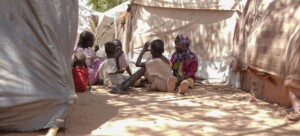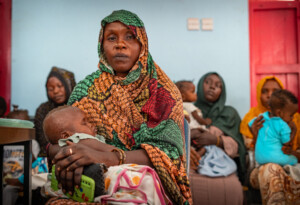Rift Valley fever suspected in Red Sea state human and livestock deaths
Arbaat in El Ganeb locality in Sudan’s Red Sea state reported 10 new cases of suspected Rift Valley fever* on Monday and Tuesday, bringing the total number of registered cases to five, and three deaths.
 Map showing distribution of Rift Valley Fever (WHO)
Map showing distribution of Rift Valley Fever (WHO)
Arbaat in El Ganeb locality in Sudan’s Red Sea state reported 10 new cases of suspected Rift Valley fever* on Monday and Tuesday, bringing the total number of registered cases to five, and three deaths.
Doctor Ahmed Dereir told Radio Dabanga about the spread of the disease in eight villages in the area of Arbaat, pointing out that the cases were transferred to Port Sudan for treatment.
He explained that the governor formed an emergency room of 35 people representing various government agencies, medical committees, and members of the Forces for Freedom and Change.
Ali Bayrak, head of the Community Support Committee for the residents of Arbaat called on the government for the explicit announcement of the results of laboratory testing of samples.
The state Ministry of Health committed to provide two doctors to the villages of the Arbaat Administrative Unit and training 10 medical staff, and three midwives, in addition to the distribution of water chlorination tablets and the provision of three spraying vehicles.
As reported by Radio Dabanga on Sunday, one man and more than 20 head of cattle died in Arbaat on Thursday and Friday, and that to date, So far, three people and 420 cows have died of the disease, now suspected to be Rift Valley fever, that hit the area of Arbaat, north of Port Sudan, over the past weeks, medical doctor Ahmed Dereir told Radio Dabanga.
* According to the UN World Health Organisation (WHO,) Rift Valley fever (RVF) is a viral zoonosis that primarily affects animals but also has the capacity to infect humans. Infection can cause severe disease in both animals and humans. The disease also results in significant economic losses due to death and abortion among RVF-infected livestock.
RVF virus was first identified in 1931 during an investigation into an epidemic among sheep on a farm in the Rift Valley of Kenya, and most cases occur in Sub-Saharan Africa.
Key facts
- Rift Valley fever (RVF) is a viral zoonosis that primarily affects animals but can also infect humans.
- The majority of human infections result from contact with the blood or organs of infected animals.
- Human infections have also resulted from the bites of infected mosquitoes.
- To date, no human-to-human transmission of RVF virus has been documented.
- The incubation period (the interval from infection to onset of symptoms) for RVF varies from 2 to 6 days.
- Outbreaks of RVF in animals can be prevented by a sustained programme of animal vaccination.
Radio Dabanga’s editorial independence means that we can continue to provide factual updates about political developments to Sudanese and international actors, educate people about how to avoid outbreaks of infectious diseases, and provide a window to the world for those in all corners of Sudan. Support Radio Dabanga for as little as €2.50, the equivalent of a cup of coffee.
a












 and then
and then